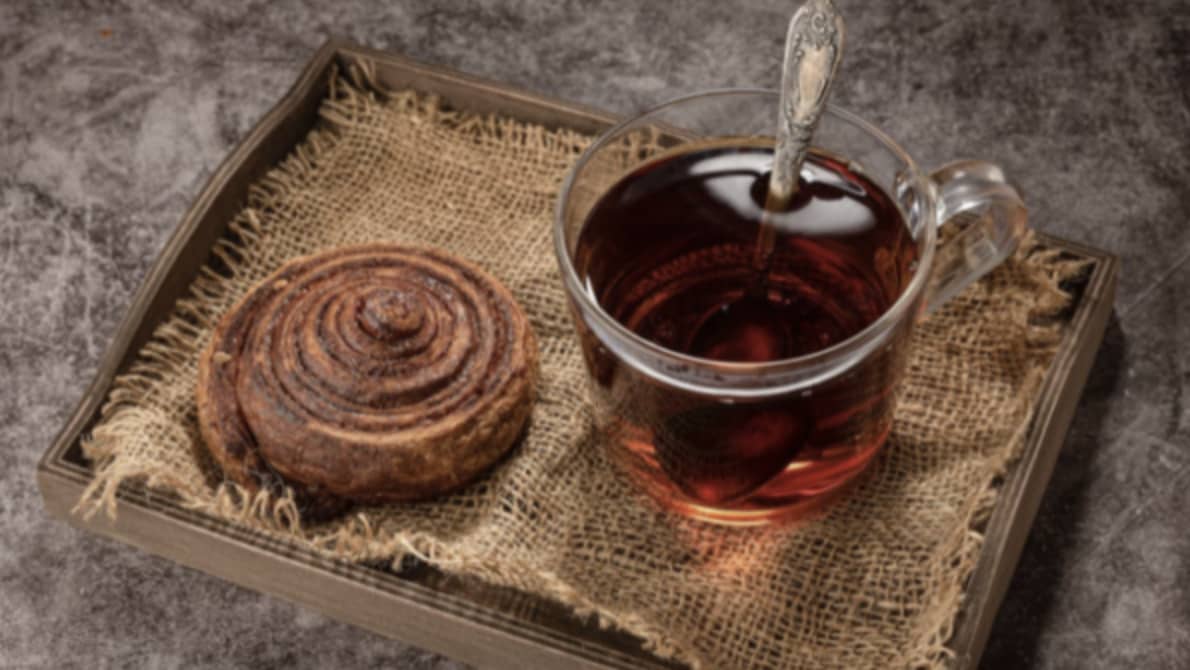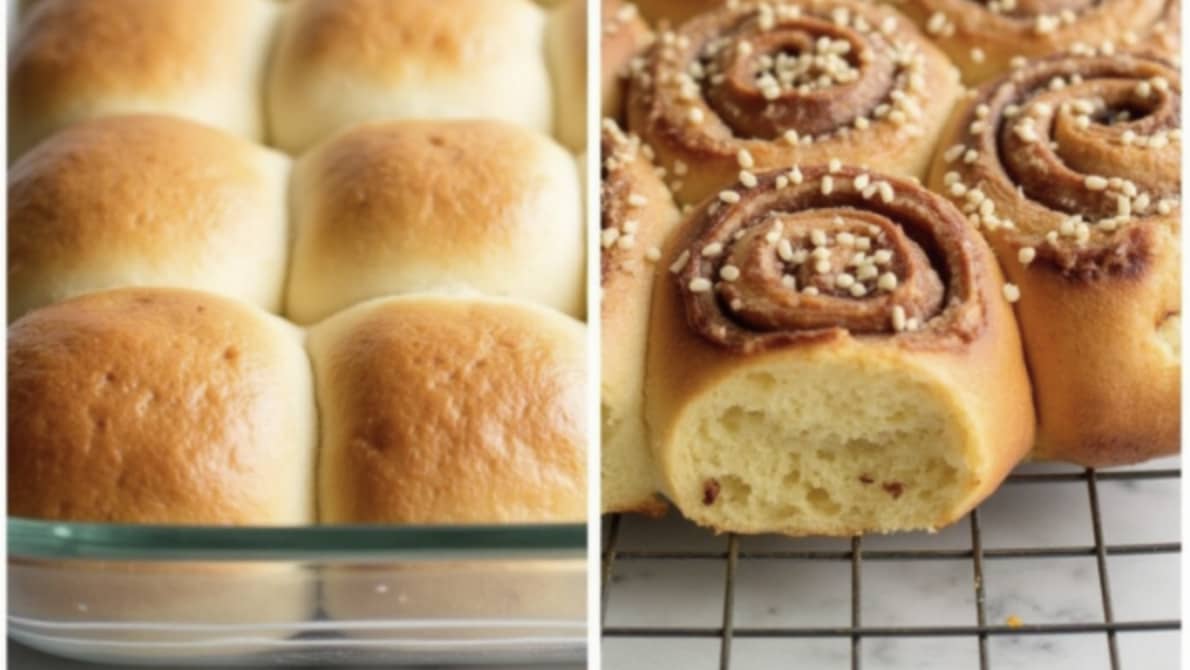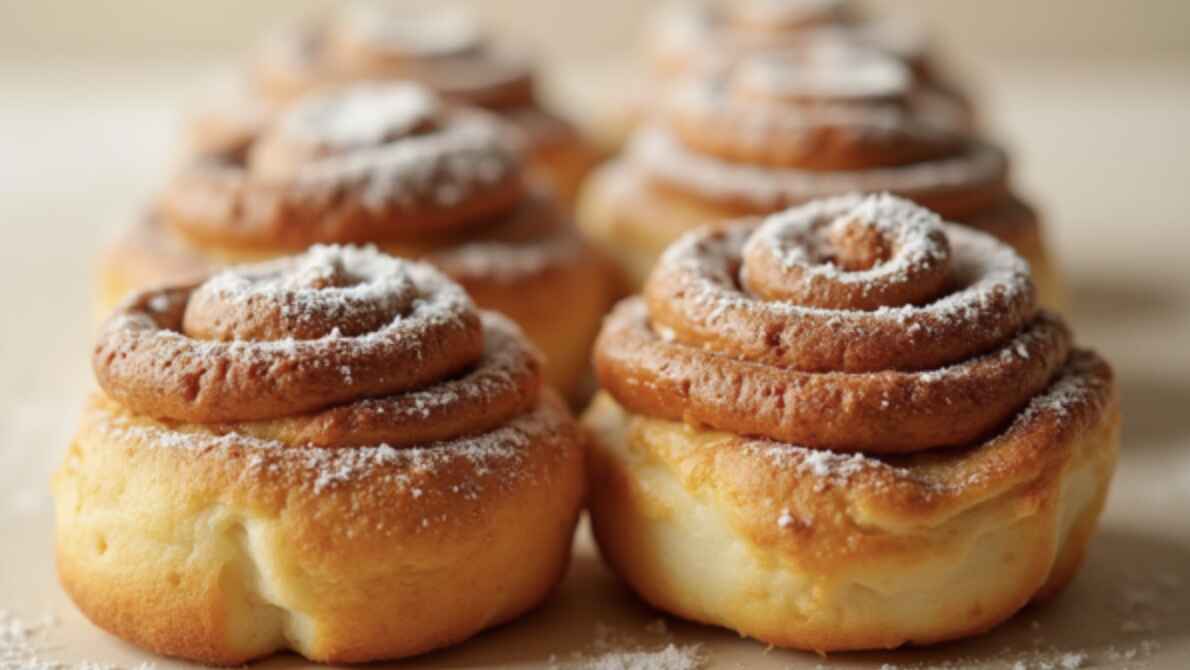The Sweet Debate Between Cinnamon Buns and Cinnamon Rolls
When it comes to baked goods, few treats can compete with the warm, gooey goodness of cinnamon buns and cinnamon rolls. 🥐 But here’s the thing—are they the same? If you’ve ever stood in a bakery staring at both and wondered, “Aren’t these just two names for the same thing?”—you’re not alone.
Table of Contents
At first glance, cinnamon buns and cinnamon rolls look nearly identical. Both are soft, doughy pastries swirled with a rich cinnamon-sugar filling and often topped with some kind of glaze or icing. Yet, despite their similarities, these two pastries have subtle differences that set them apart.
“Good food is the foundation of genuine happiness.” – Auguste Escoffier
A Brief History of Cinnamon Buns and Cinnamon Rolls

Understanding the difference starts with knowing where they came from.
Origins of Cinnamon Buns
Cinnamon buns, or Kanelbullar as they’re called in Sweden, have deep roots in Scandinavian culture. Originating in the early 20th century, these buns became a staple in Swedish homes and cafés. Traditionally, cinnamon buns are flavored with cardamom in the dough, giving them a slightly spicy and aromatic profile.
In Sweden, October 4th is celebrated as Kanelbullens Dag (Cinnamon Bun Day)—a whole day dedicated to these delicious pastries. 🇸🇪
Origins of Cinnamon Rolls
On the other hand, cinnamon rolls are more commonly associated with North America, especially in the United States. These sweet rolls became popular in the mid-20th century, often served as a breakfast treat. Unlike their Scandinavian cousins, cinnamon rolls are typically richer and often smothered in a creamy icing glaze.
American cinnamon rolls are all about indulgence—gooey centers, sweet icing, and buttery layers. If you’ve ever been to a famous cinnamon roll chain (Cinnabon, anyone?), you know exactly what we’re talking about!
🍩 Fun Fact: Cinnamon is one of the oldest spices known to humanity, dating back to ancient Egypt!
Key Differences Between Cinnamon Buns and Cinnamon Rolls

Now that we know where they came from, let’s break down the differences:
Ingredients: Are They the Same?
At their core, both cinnamon buns and cinnamon rolls share similar ingredients:
- Flour
- Yeast
- Sugar
- Cinnamon
- Butter
However, cinnamon buns often have cardamom added to the dough, while cinnamon rolls lean heavily on the butter and sugar for that sticky, gooey texture.
Preparation Method: How They’re Made Differently
One key difference lies in the baking process:
- Cinnamon Buns: Often baked individually or arranged in a pan with spaces between them.
- Cinnamon Rolls: Usually packed tightly in a baking dish, allowing them to bake together and create a pull-apart texture.
This slight difference affects how they rise, bake, and ultimately, their texture.
Texture and Appearance: Spotting the Differences
- Cinnamon Buns: Typically less sticky and slightly firmer. They may also be topped with pearl sugar instead of icing.
- Cinnamon Rolls: Soft, gooey, and often dripping with icing or cream cheese glaze.
When you bite into a cinnamon bun, you’ll notice a more structured texture, while a cinnamon roll practically melts in your mouth.
Taste Comparison: Which One Is Sweeter?
If you have a sweet tooth, cinnamon rolls might win this round. Thanks to their sugary glaze and buttery filling, they’re often considered sweeter than cinnamon buns.
On the other hand, cinnamon buns have a more balanced flavor, with cardamom adding a slightly spicy kick to the sweetness.
So, whether you prefer the sticky indulgence of cinnamon rolls or the lightly spiced elegance of cinnamon buns, both are undeniably delicious in their own way. 🍯
Popular Variations Around the World
Cinnamon buns and cinnamon rolls may have originated in specific regions, but today, these pastries are enjoyed worldwide, each culture adding its unique twist.
Scandinavian Cinnamon Buns (Kanelbullar) 🇸🇪
In Sweden, cinnamon buns (Kanelbullar) are a cultural icon. These buns are often less sweet than their American counterparts and are typically sprinkled with pearl sugar instead of icing. The addition of cardamom to the dough gives them a slightly spicy, aromatic flavor, making them a perfect companion to a cup of coffee.
In Swedish culture, fika—a daily coffee break ritual—often includes a warm cinnamon bun. It’s not just about eating; it’s about slowing down, socializing, and savoring each bite.
“Fika isn’t just about coffee and buns; it’s about taking a moment to breathe and connect.”
American Cinnamon Rolls 🇺🇸
On the other side of the world, American cinnamon rolls are all about indulgence. These rolls are usually larger, gooier, and drenched in a creamy icing or cream cheese glaze.
One of the most famous examples of American-style cinnamon rolls is the iconic Cinnabon, known for its melt-in-your-mouth texture and signature sugary glaze. They’re often served warm and are a staple in many American breakfasts.
Other Global Variations 🌎
- German Schnecken: Similar to cinnamon rolls but often filled with nuts and raisins.
- Finnish Korvapuusti: A close relative of the Swedish Kanelbullar, but with a unique twisted shape.
- Danish Kanelsnegle: These are typically flatter and have a crispier exterior.
No matter where you travel, you’re bound to find a delicious variation of these cinnamon treats. Each version tells a story of culture, tradition, and the universal love for something sweet and comforting.
Common Problems When Making Cinnamon Buns and Rolls

Baking cinnamon buns or rolls at home can be a rewarding experience, but it’s not without challenges. Here are some of the most common problems people encounter:
Dough Not Rising Properly 🍞
One of the most common frustrations is dough that refuses to rise. This issue can stem from:
- Using expired yeast.
- Water or milk that’s too hot or too cold.
- Not allowing enough time for the dough to proof.
If the dough doesn’t rise, your buns or rolls will end up dense and chewy instead of soft and fluffy.
Overbaking or Underbaking ⏲️
Perfectly baked cinnamon buns or rolls should be golden brown on the outside and soft in the middle. Common mistakes include:
- Baking at too high a temperature.
- Taking them out of the oven too early.
- Overbaking until they’re dry and hard.
The key is to keep a close eye on them during the final few minutes of baking.
Achieving the Perfect Cinnamon Swirl 🌀
Ever cut into a cinnamon roll and noticed the filling has leaked out or the swirl isn’t even? This can happen if:
- You roll the dough too tightly or too loosely.
- The filling isn’t spread evenly.
- You don’t seal the edge of the dough properly.
The perfect swirl is both visually appealing and ensures every bite has that delicious cinnamon-sugar filling.
Solutions to Common Baking Problems
Now that we’ve identified the problems, let’s talk about the solutions!
Tips for Perfect Dough Rising 🌟
- Use fresh, active yeast.
- Make sure your liquid (water or milk) is around 110°F (43°C)—warm but not hot.
- Give the dough plenty of time to proof in a warm, draft-free area.
A well-risen dough is the foundation of soft, fluffy cinnamon buns and rolls.
Avoiding Overbaking and Underbaking 🍪
- Always preheat your oven.
- Bake at the recommended temperature (usually around 350°F or 175°C).
- Use a toothpick to check the center—if it comes out clean, they’re done.
Remember, slightly underbaked is better than overbaked because they’ll continue to cook from residual heat.
Mastering the Cinnamon Swirl Technique 🌀
- Roll the dough evenly, not too tight and not too loose.
- Spread the filling evenly across the dough.
- Pinch the edges tightly to seal the roll.
With practice, you’ll create swirls worthy of a bakery display!
🍰 Pro Tip: Brush melted butter over the dough before spreading the cinnamon filling. It helps the filling stick and adds extra richness.
Nutritional Comparison: Which Is Healthier?
When it comes to health, cinnamon buns and cinnamon rolls aren’t exactly considered “diet food.” But let’s break it down.
Calorie Count and Ingredients Breakdown
- Cinnamon Buns: Slightly lower in sugar and calories, especially if topped with pearl sugar instead of icing.
- Cinnamon Rolls: Higher in sugar, butter, and overall calories due to the rich glaze.
Healthier Alternatives and Substitutes 🥗
If you want to make a healthier version:
- Use whole wheat flour instead of refined white flour.
- Swap sugar for natural sweeteners like honey or maple syrup.
- Reduce the butter in the filling.
While these swaps won’t make them a health food, they’ll definitely lighten them up a bit.
Best Occasions to Serve Each Pastry 🎉
Cinnamon buns and cinnamon rolls aren’t just breakfast treats—they can fit into almost any occasion. Whether it’s a cozy family gathering or a festive holiday brunch, these pastries shine.
Cinnamon Buns: Perfect for Casual Gatherings 🍵
- Coffee Breaks: Pair them with a cup of freshly brewed coffee for a satisfying snack.
- Brunch Spreads: Add them to your weekend brunch menu alongside fresh fruit and eggs.
- Picnics: Their slightly firmer texture makes them easy to pack and share outdoors.
Buns’ subtle sweetness and cardamom flavor make them a versatile choice for relaxed, casual occasions.
Cinnamon Rolls: The Star of Indulgent Moments 🎂
- Holiday Breakfasts: A warm tray of gooey cinnamon rolls is a classic on Christmas morning.
- Dessert Alternative: Serve them as a sweet dessert with a scoop of vanilla ice cream.
- Special Celebrations: Birthdays, anniversaries, or “just because” days—they always feel like a treat.
With their soft, gooey texture and sugary glaze, cinnamon rolls are perfect for moments when you want to indulge.
“Good food brings people together, but great pastries make them stay longer.” 🥰
FAQs About Cinnamon Buns and Cinnamon Rolls
Q1: Are cinnamon buns and cinnamon rolls made from the same dough?
- They’re similar, but cinnamon buns often have cardamom in the dough, while cinnamon rolls focus more on butter and sugar.
Q2: Which one is healthier?
- Cinnamon buns are slightly less sweet and lower in calories, but both are indulgent treats.
Q3: Can I freeze cinnamon buns or cinnamon rolls?
- Yes! Both pastries freeze well. Just let them cool completely, wrap them tightly, and freeze. Reheat gently before serving.
Q4: Can I use the same recipe for both?
- You can start with the same base dough recipe, but the preparation and finishing touches will differ.
Q5: Which one is easier to make at home?
- Cinnamon buns are slightly easier because they don’t require the gooey glaze. But with a little practice, both are manageable for home bakers.
And there you have it! Whether you’re team Kanelbullar or team Cinnamon Roll, these pastries are sure to bring warmth and joy to your table. Now, go preheat that oven and let the sweet aroma of cinnamon fill your home! 🍩✨
Conclusion: Which One Should You Choose? 🤔
So, cinnamon buns or cinnamon rolls—which one wins? Well, it depends on what you’re craving:
- Choose Cinnamon Buns if you prefer something lightly sweet, with a hint of spice and a firmer texture.
- Choose Cinnamon Rolls if you’re in the mood for something soft, gooey, and topped with a luscious glaze.
At the end of the day, both pastries are delicious in their own way. Why not try making both at home and see which one steals your heart? Whether you love the Scandinavian tradition of Kanelbullar or the indulgent richness of an American-style cinnamon roll, there’s no wrong choice.
🍂 “Life is short—eat the cinnamon roll.”

